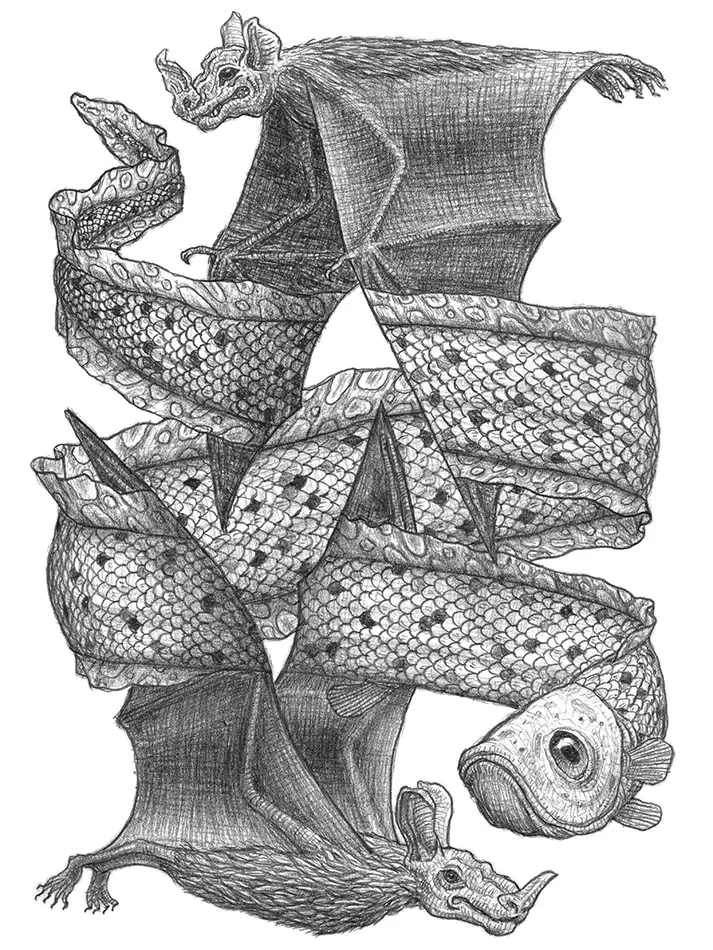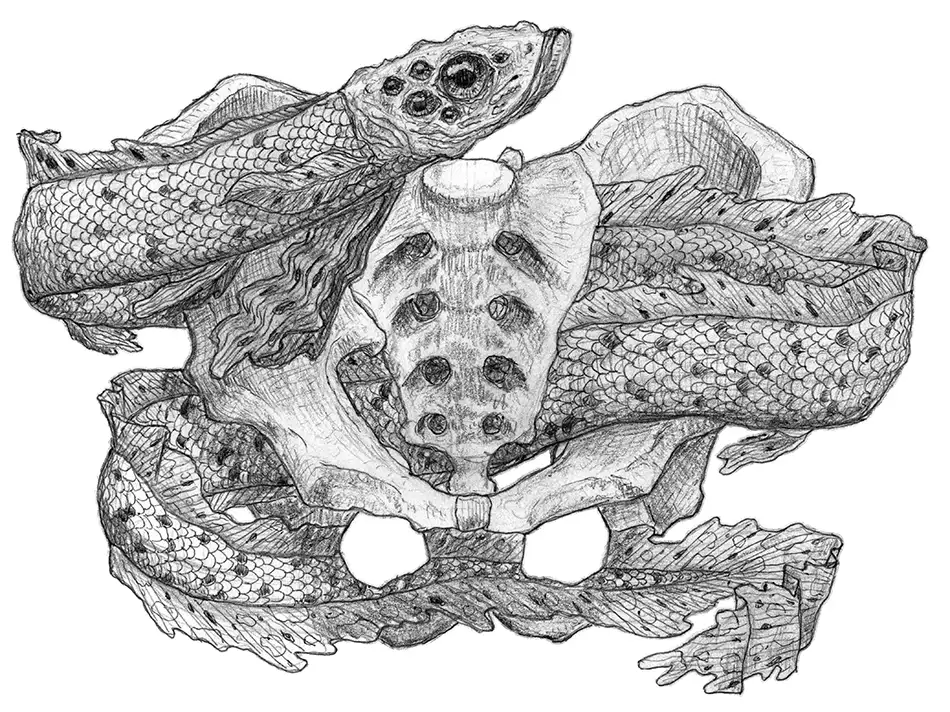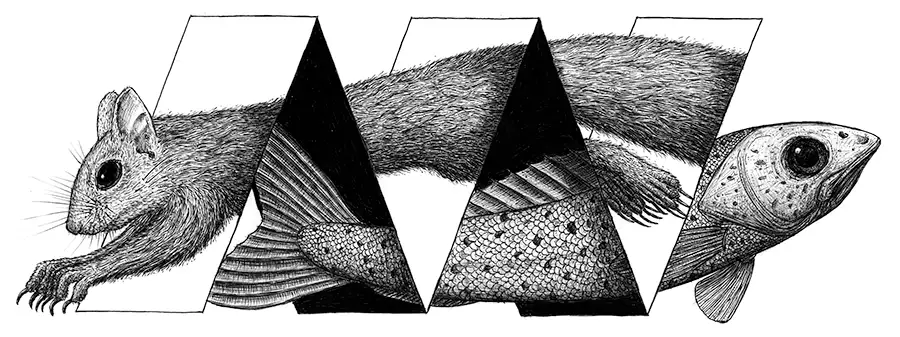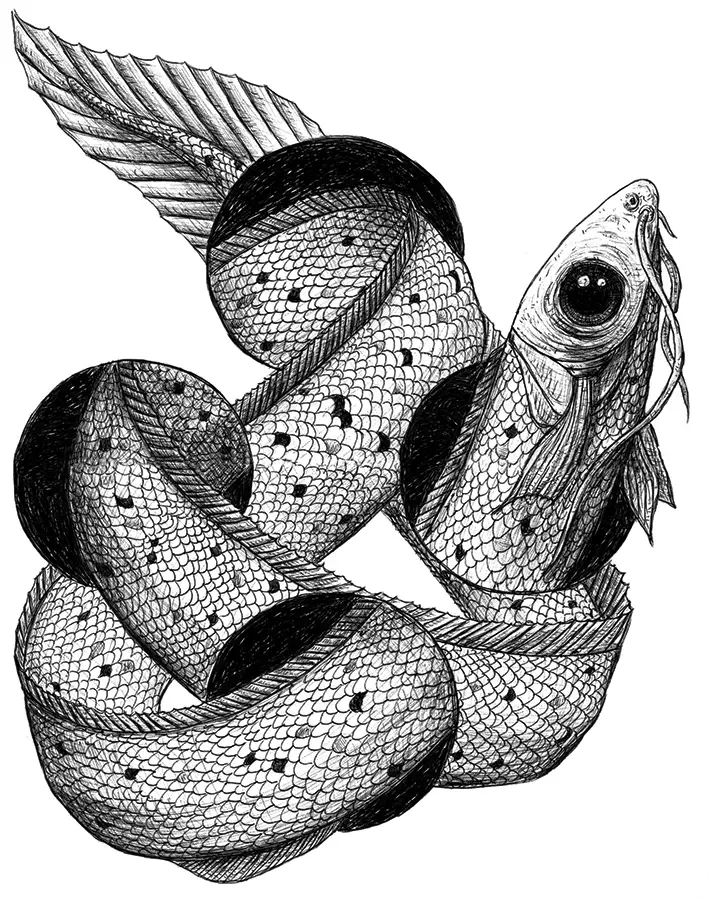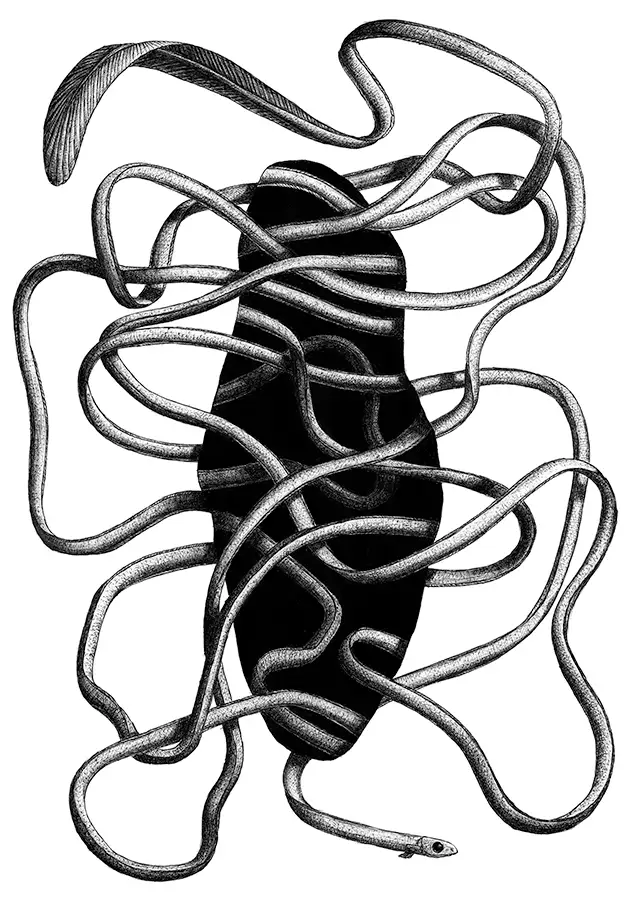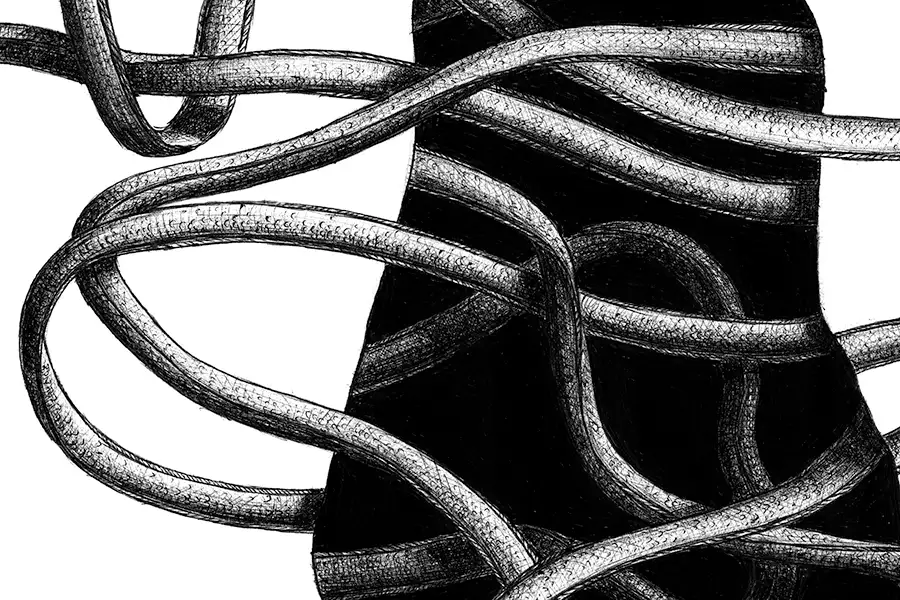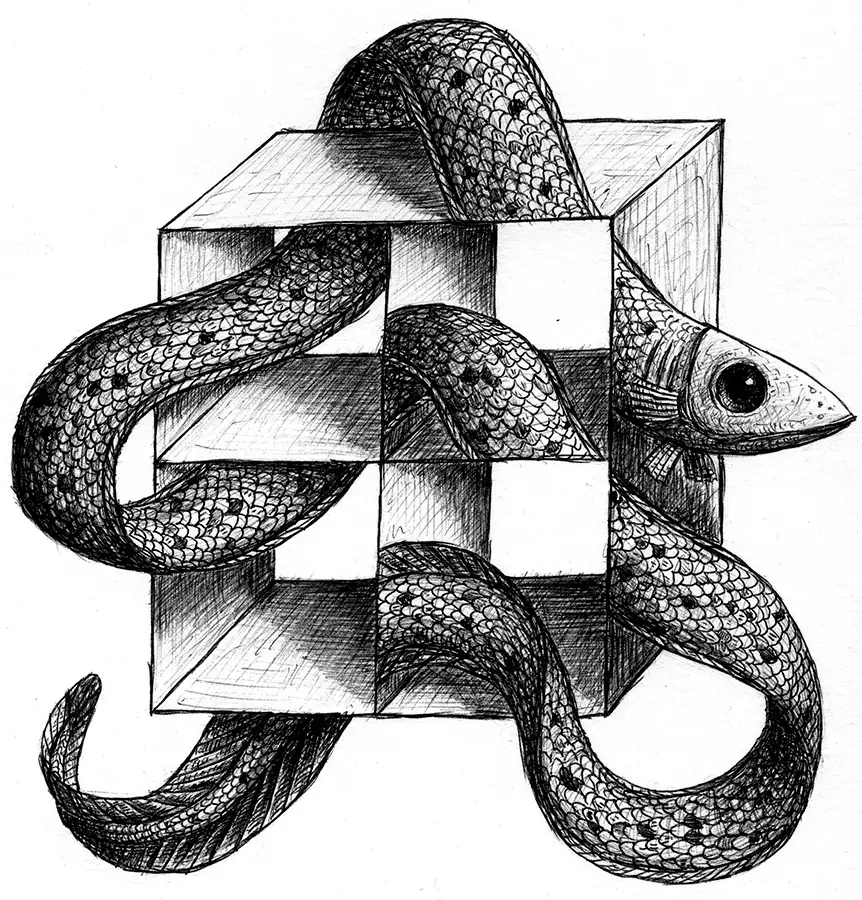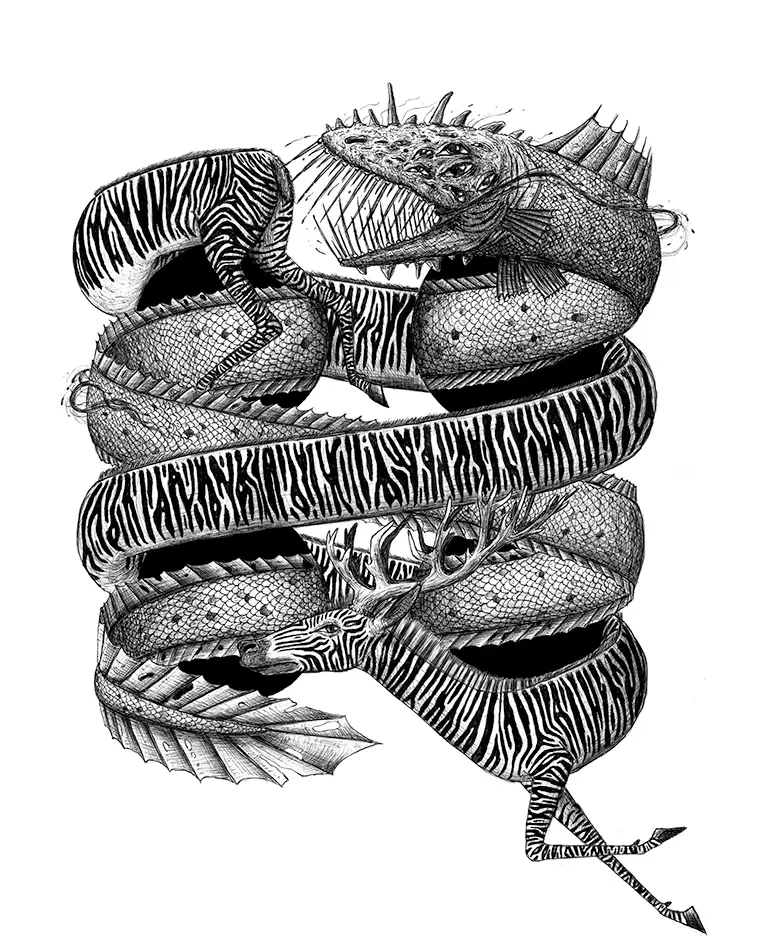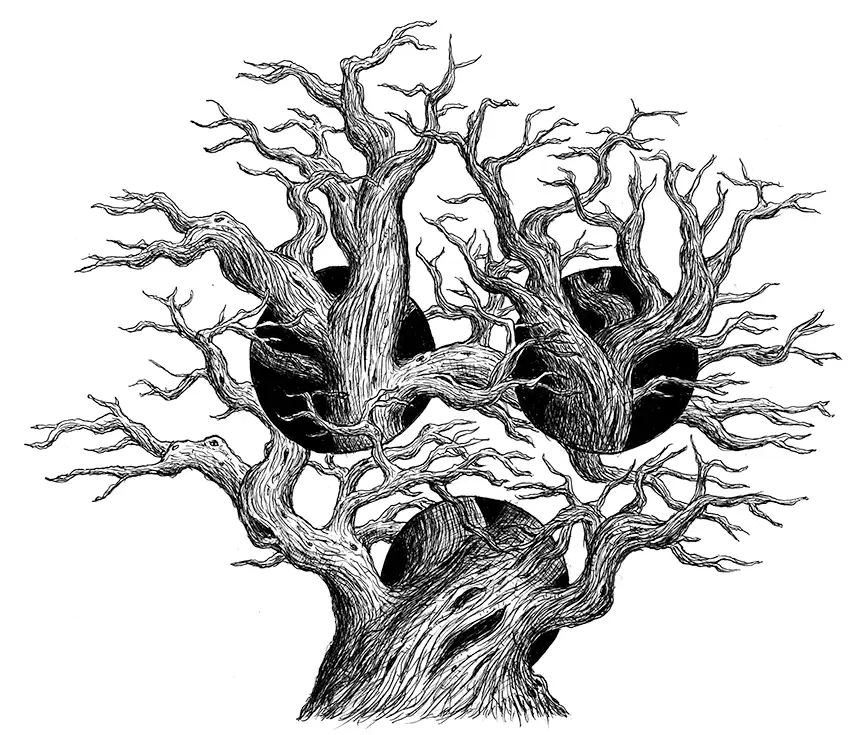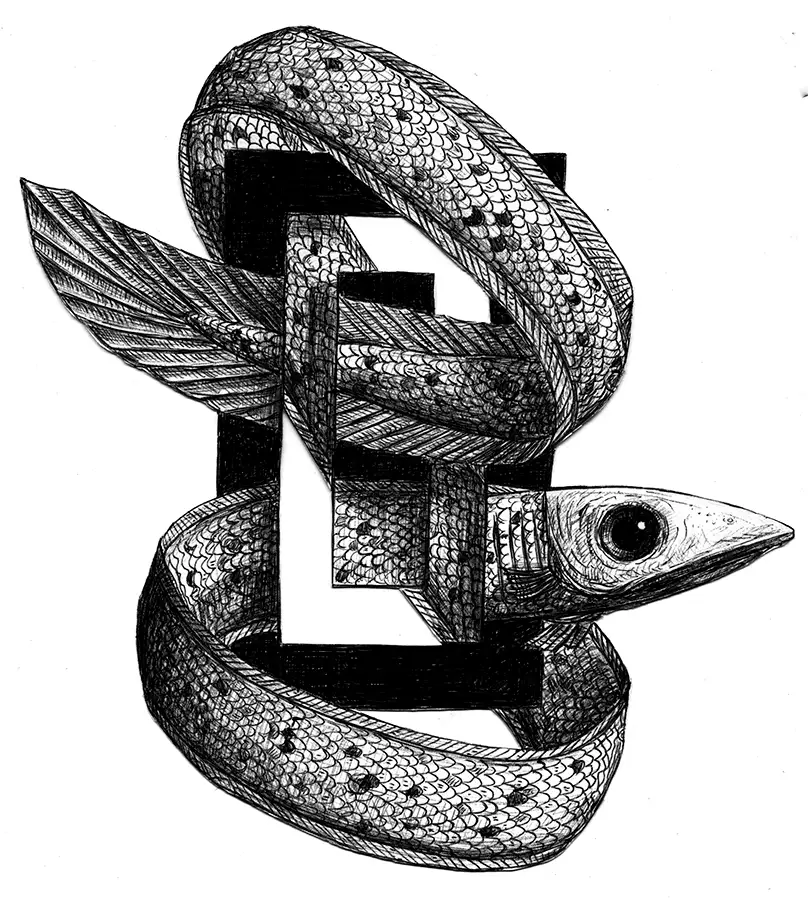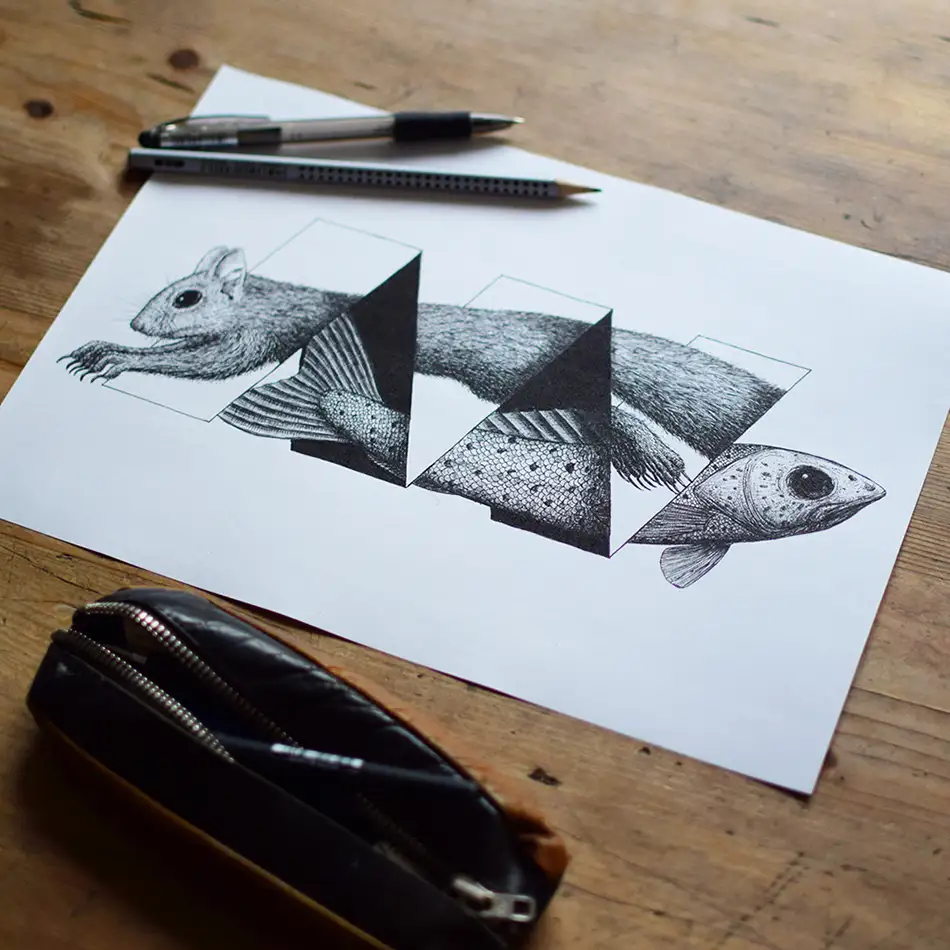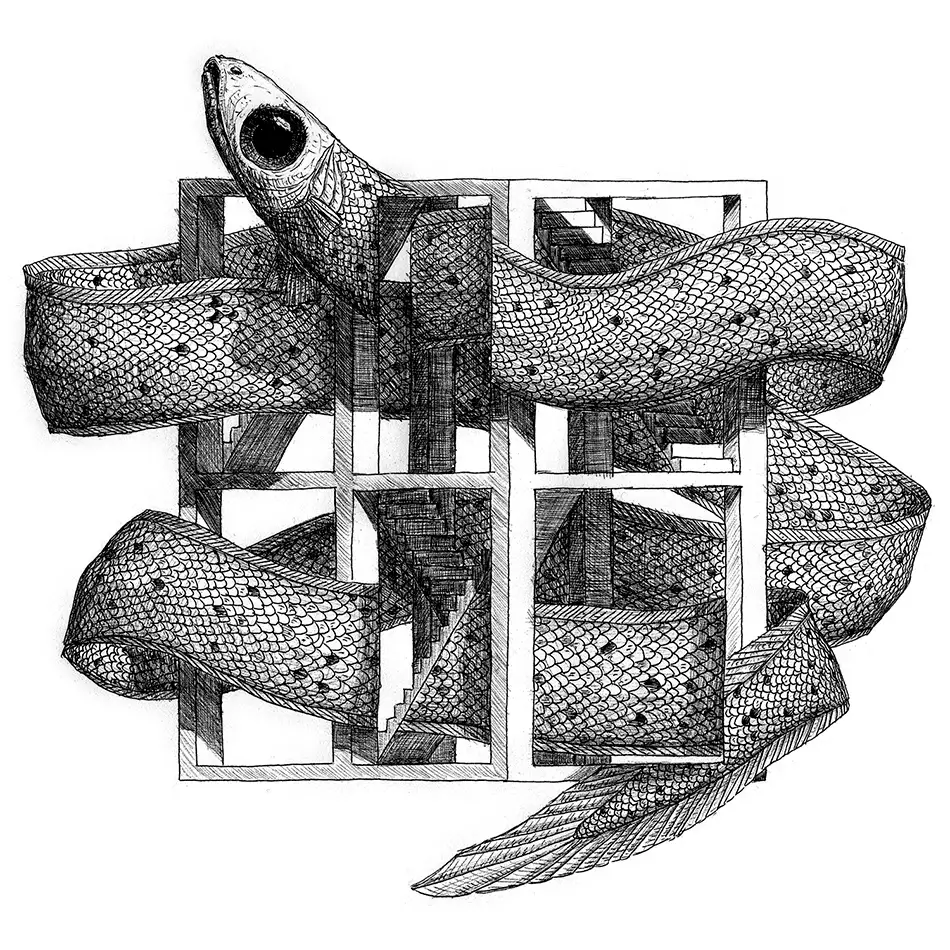
Illustration
Holes
Interview with Karin Pernegger (2023) about the series Holes in general and the painting Holes, Staircase in particular. Carried out as part of the Kunst-Ankäufe des Landes Tirol 2021.
KP: Why are you interested in optical illusion as an element of your drawings?
TM: Optical illusions are closely linked to the theme of perception and cognition. On the one hand, optical illusion is easy to describe and objectify, but at the same time it shows how ambiguous our perception of reality can be and how relevant it is which perspective we take. In this ambivalence, I find the study of optical illusions exciting.
KP: In this context, how do you explain the title Holes, Staircase of your work from 2019?
TM: There is a whole series called Holes. It is centred on eel-like creatures and other animals that move in impossible and geometrically intertwined spaces. The animals move through holes, but they are also always behind these holes. These openings thus become a paradoxical object, and the creatures perform an impossible movement that can only be depicted in the interplay between the two-dimensional paper and the three-dimensional drawing.
KP: Is it intentional that you combine architecture with eels in your drawings?
TM: In terms of craftsmanship, the eel is long and flexible due to its anatomy, which makes it easy to integrate into the pictures. In terms of theme, my work is often about the relationship between human-made spaces and those that existed before humans. Humans are also animals that are dependent on ecological and biological processes, but at the same time we can emancipate ourselves from nature in a way through language and culture. Even if this has many advantages, the destruction of the earth is a clear disadvantage of this alienation, which affects not least ourselves.
As in an optical illusion, we find ourselves outside of "nature" to a certain extent, without ever really being able to leave it.
KP: In your works, the animal-human relationship often refers to the Anthropocene era with the human-made changes to the ecosystem and the extinction of animal species. Does the eel also stand for this in this work?
TM: The image can also be read as a dystopia, in which all that exists are architectural ruins that have been flooded by humans and reclaimed by non-human animals. The animal world has fascinated me from the very beginning of my work, and that makes it inevitable that I also think about ecology and biodiversity.
Years: 2014, 2015, 2019, 2022
Techniques: ballpoint and pencil illustration
Availability:
